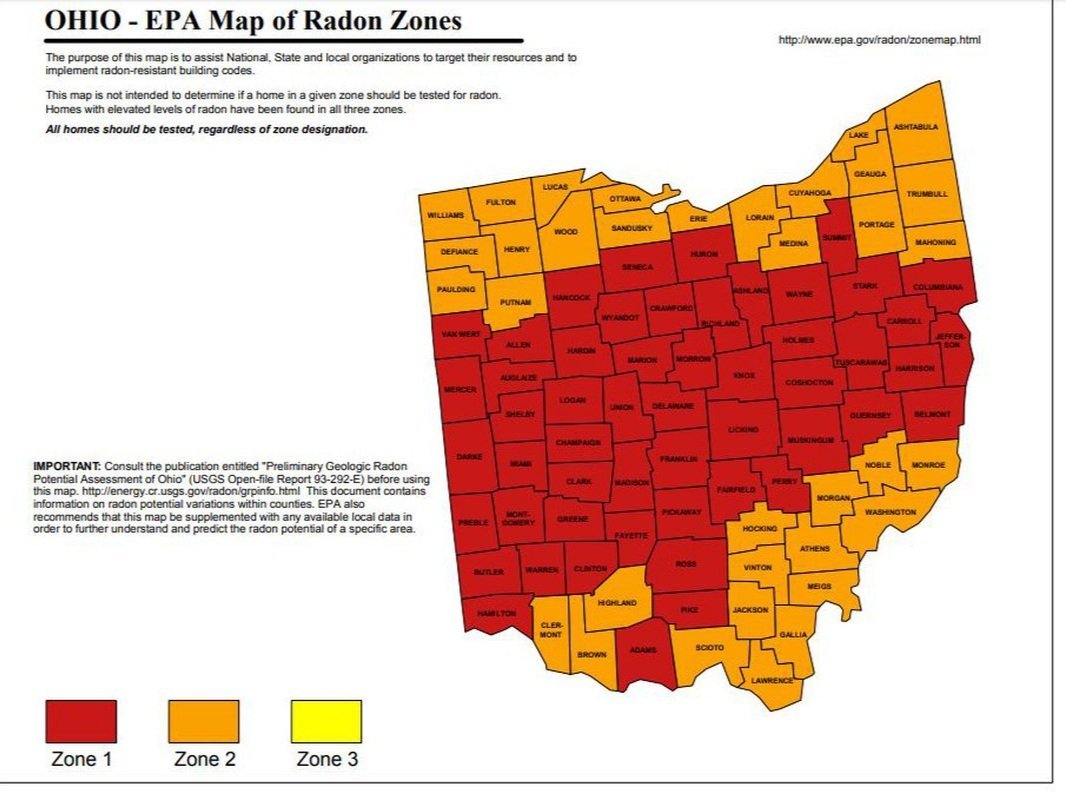What You Need to Know About the Dangers of Radon
Radon concerns are NOT false. It is an actual dangerous radioactive gas listed in the Scientific Table of Elements along with all the other radioactive substances.
Radon is the second leading cause of lung cancer, and the number one cause of lung cancer among non-smokers, according to EPA estimates. It is actually more deadly than second-hand smoke.
Radon causes over 21,000 lung cancer deaths every year. Almost 3,000 of those deaths occur among people who have never smoked.
On January 13, 2005, Dr. Richard H. Carmona, the U.S. Surgeon General, issued a national health advisory on radon
Radon Presence in Ohio
Radon is a clear and present health hazard and that can’t be detected without proper testing. It is an odorless, colorless gas whose presence puts you and your family in jeopardy because the effects of radon exposure can be severe, especially on children.
In Ohio, Radon is a very Major problem. As this map, created by the EPA, shows, most of Ohio has very high levels of the gas (shown in red.) Franklin, Delaware & Montgomery Counties average DOUBLE the EPA max level of concern, and some of the highest measurements on record have been in the thousands in Ohio! Even those areas that aren’t totally high are still high enough to be of concern.
Radon is a dense gas that tends to settle in the lowest available space, so those who sleep or spend a lot of time on the lowest levels of their home (first floor or basement) are at the highest risk.
Why Do You Need Radon Testing?
Because radon gas is odorless, colorless, and has no taste You’ll never know that radon is in your home unless you have it tested. Just because no one has had your home tested and it is older means nothing.
The effects can be felt within a few months or as long as 25 years after exposure.
The radioactive emissions damage cells it will take 44 years for 75% of radon inhaled to become harmless. But the remaining 25% can affect your health even after that period. Prolonged Exposure increases the chances for greater danger.
Radon Gas Symptoms
Radon gas exposure affects the respiratory system, with symptoms that can take years to develop but are irreversible.
The most common symptoms are:
• Chest pain
• Hoarseness
• Coughing
• Wheezing
• Shortness of breath
EPA Bulletin 2009b
The risk of lung cancer from radon exposure is estimated at between 10 to 20 times greater for persons who smoke cigarettes compared to those who never smoked.
EPA News Release 2003
Exposure to high radon levels is the leading environmental cause of death in the United States
EPA estimates that at its recommended guideline of 4 pCi/L, the risk of developing lung cancer is based on exposure factors:
Age during exposure – the very young and the very old are at the greatest risk
Duration of exposure – the longer the exposure the greater the risk
Climate and time of year—in Ohio, radon levels are often higher in the winter and lower in the summer
Time elapsed since initiation of exposure.
Don’t Take Unnecessary Risks!
Get Your home tested to find out if your family is at risk for radon poisoning.


